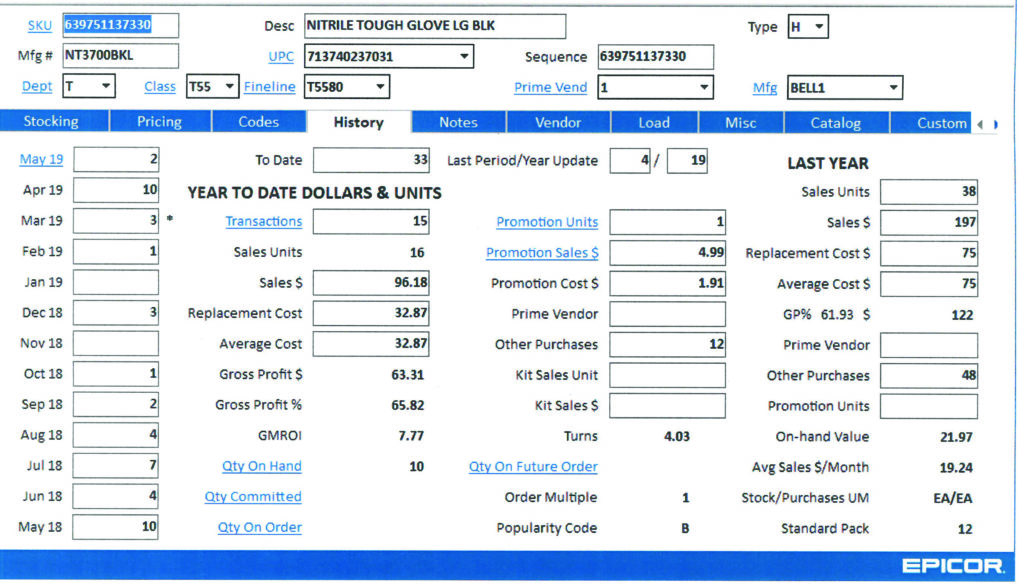With 70,000 square feet of display area, Echter’s Nursery & Garden Center has a lot of space to fill. Each year, Echter’s staff makes careful calculations on what and how much to order to stock the most profitable selection of plants and garden products.
Established 60 years ago at its Arvada, Colo. location, the family-owned business has operated as a retail garden center since 1978. Consequently, the owners and managers benefit from many decades of ordering experience.

“When we start approaching the ordering period for the following year, we don’t pay a whole lot of attention to the wider market,” said company President Steve Echter. “We get all the trade magazines and look at what people write about the trends, but it’s hard to say that will affect my store the way the writer is saying it.”
Recently, Echter has read about how succulents, house plants and fairy gardening are becoming passé, but he hasn’t seen those trends in his store and sometimes he hears that other stores are still selling those products well, too. He agrees being aware of trends is a good idea so those product sales can be watched more closely, but he still pays more attention to the sales numbers within his garden center.
“Obviously if you were looking at a severe water shortage, you would start considering that in your numbers. But, when you are placing your order for nursery stock and perennials, you don’t really know whether a water shortage will start that winter. If you knew you would be in a drought, you would be more conservative on what you’re bringing in, and may not order as many new products,” he said.

He puts faith in one economic forecasting source, and that’s Charlie Hall. Serving as the chief economist for AmericanHort, Hall is a professor in the Department of Horticultural Sciences and Ellison Chair in International Floriculture at Texas A&M University.
He produces videos about the economy and horticultural markets. In his April video, he said it’s really unlikely that a recession will start in 2019, there’s a 50-50 chance it will happen in 2020, and an 80% chance it will hit in 2021.
Even with an unclear forecast for next year, if Echter’s has a really good 2019, the garden center would probably still order almost as much for 2020 as it did for this year, Echter said.
Then, he would watch for sales trends next year. If a recession started to hit, he would expect the more expensive products would not sell as well.
“For example, customers may go for large hanging baskets when the economy is good, but they’ll buy smaller baskets when the economy is bad, and perhaps, no baskets at all during a drought,” he explained.
“Chances are what would happen is we would be long on bigger baskets, so we would need to reorder smaller baskets and mark down the bigger baskets. We look at sales each week and put items on sale that we are long on and try to move the excess out the door early rather than waiting until the end of the season,” he added.
Rather than going overboard speculating on new trends or products, which makes it easy to overbuy, Steve Echter believes it’s better to start with small, test orders and then watch closely and order more if they sell well.
In general, he tries to order conservatively even in good economies. Rather than going overboard speculating on new trends or products, which makes it easy to overbuy, he believes it’s better to start with small, test orders and then watch closely and order more if they sell well.
“I aways think it’s kind of better to be on the safe side, rather than buying deep on something that we haven’t bought before,” he said.
For all plant sellers, the seasonality of the business makes ordering more difficult. Planning six months or more ahead of the next big sales season can be tricky.
“When I look at hardware stores, they seem to be happy when they don’t have to buy much in advance. They would like to not have to put the emphasis on early order stock-up programs, just have everything they need in stock at the wholesaler, and be able to order weekly based on what they need to keep the shelves full,” he said.
Garden centers, on the other hand, are generally ordering as much as can fit in their display and storage areas, so they ensure they have sufficient inventory to meet peak customer demand.
The other challenge for garden center inventory managers is trying to keep the store looking nice for customers. Though Echter’s tries to keep the display areas attractive, they inevitably will start looking a bit bare late in the season.

“We have no good answer for it. In April to May, it is looking good out there. All of the benches are full. In July, if we are trying to keep benches and shelves full, we are buying too much,” he explained. “As the benches empty out, when customers come into the store in August, it’s not as exciting, but the numbers say we don’t need to replenish those products. We try to consolidate towards the front of the store and let the back go empty. I’ve seen stores take out benches and widen aisles and take out shelves so they are not bare.”
While Echter’s keeps bird feeders, gifts, holiday decorations and indoor tropical plants on display year-round, it’s not nearly enough to fill up the store during off season. But, those late summer and early fall months soon pass, and Christmas tree sales and holiday events keep the store more attractive towards the end of the year.
Then, when January and February come, the plan is for the first orders of long-lasting products like the hard goods, pottery and fertilizer to arrive and get set up. Each department tries to get everything in around the same time so they can set up that department completely, but it doesn’t always work out that way.
Item selection in gift, holiday, and décor departments can vary greatly from year to year, and items that sold well in the last year may not be offered the next year. Here, as in fashion, sometimes an open-to-buy number makes sense where the focus is on the entire fine line (sub-department) or manufacturer rather than the sales of the individual items.
“Buying for all these categories is very time consuming and requires a lot of labor dollars to do it correctly, but the rewards are great and are often the big difference in profitability for the year,” he concluded.










